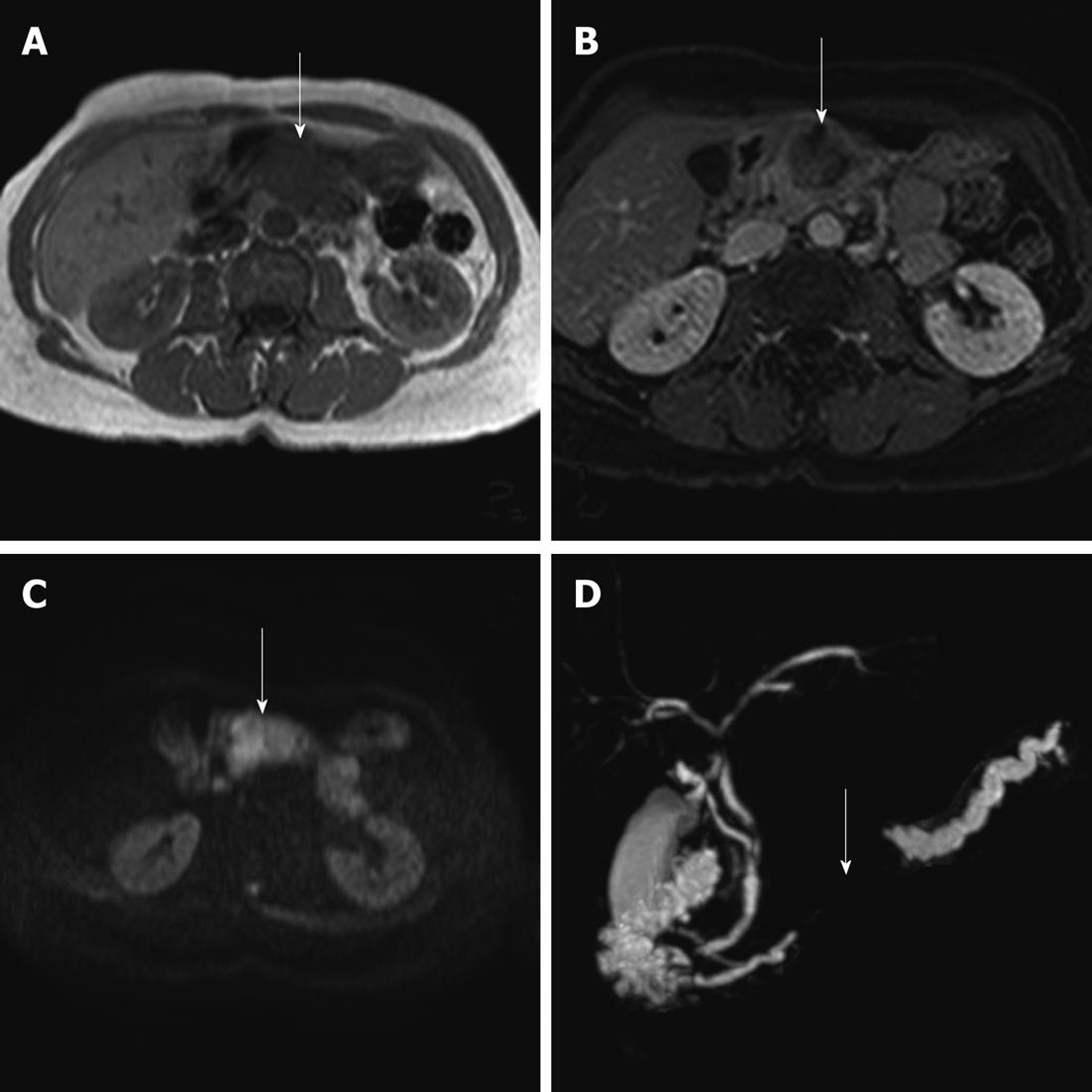Copyright
©2012 Baishideng Publishing Group Co.
World J Gastroenterol. Jun 28, 2012; 18(24): 3058-3069
Published online Jun 28, 2012. doi: 10.3748/wjg.v18.i24.3058
Published online Jun 28, 2012. doi: 10.3748/wjg.v18.i24.3058
Figure 3 Magnetic resonance imaging appearance.
A: T1 sequence showing an adenocarcinoma of the pancreas with a hypo-intense signal (arrow), whereas normal pancreatic tissue appears hyper-intense; B: T1 sequence with fat saturation injection: after injection of gadolinium, the pancreatic adenocarcinoma is hypo-enhanced (arrow) compared to the healthy parenchyma; C: A sequence of diffusion: hyper-intensity (arrow) signal due to the hyper-cellularity of the tumor; D: Sequence 3D-magnetic resonance cholangiopancreatography: stenosis of the main pancreatic duct (arrow) with upstream dilatation due to a tumor of the pancreatic isthmus.
- Citation: Ouaïssi M, Giger U, Louis G, Sielezneff I, Farges O, Sastre B. Ductal adenocarcinoma of the pancreatic head: A focus on current diagnostic and surgical concepts. World J Gastroenterol 2012; 18(24): 3058-3069
- URL: https://www.wjgnet.com/1007-9327/full/v18/i24/3058.htm
- DOI: https://dx.doi.org/10.3748/wjg.v18.i24.3058









